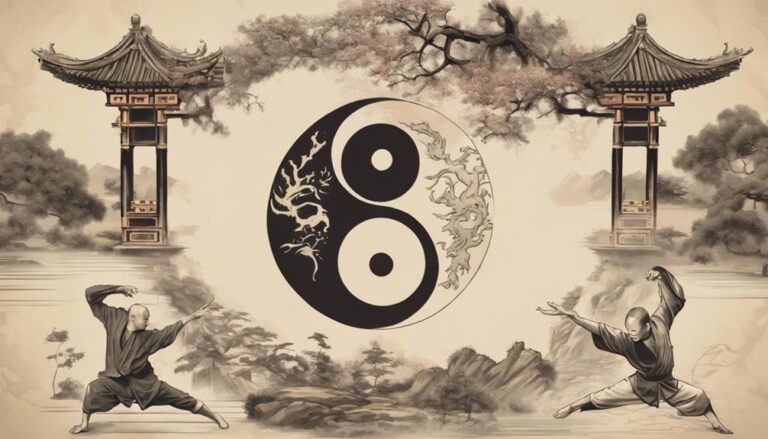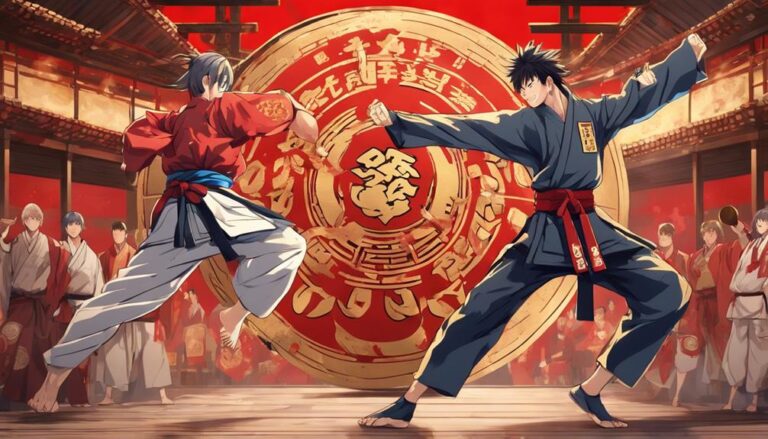Kung fu uses color-coded belts depending on the expertise and skill to rank those that practice it. The belt system’s development might vary based on the specific kung fu type, as there are more than 400 types of kung fu.
More so, kung fu schools can freely choose their belt requirements, but generally, they follow the traditional ten degrees from white to black belt.
Let’s dive deeper into the Brown belt in kung fu to see what the color says about the martial artist.
Contents
What Does the Brown Belt Signify?
To start with, novice belts in kung fu are white, yellow, gold, and orange. After the novice stage, you will progress to the intermediate stage with green, blue, and purple colors.
The brown belt is the highest-ranking color belt below the red and black belts in kung fu. It signifies refined skills and convictions as firm as the brown ground under your feet. It represents advanced training before you attain the black belt.
How Long Does It Take to Achieve the Brown Belt?
Progressing from the beginner white belt up to the brown belt normally requires at least three to four years of persistent training.
This stage is often considered a time to refine kung fu techniques. To become eligible for the brown belt, students should be at least 18 years old and have spent around eighteen months as a purple belt to become eligible for a brown belt.
To ascend to the black belt from the brown belt, you are needed to train at the brown belt level for at least 12 to 18 months.
However, you will need to first advance to the red belt before attaining the black belt. The red belt embodies the student’s leadership, courage, and energy.
What Students Need to Know to Obtain a Brown Belt in Kung Fu?
The brown belt is an advanced-level belt in kung fu. It symbolizes fine-tuned skills of kung fu art enough for you to become an example to other students.
To achieve the brown belt in kung fu, a student needs to have refined the basics of Kung Fu and be stable. They should have well-instilled discipline and refined skills.
The brown belt demands more drills in terms of workouts, powerful strikes, moves, blocks, and progressive stances.
A student must have an advanced understanding of kung fu, not just utilize it in fighting moves.
What Tests Are Taken for The Brown Belt?
As stated earlier, the brown belt in kung fu is an embodiment of intense focus, sacrifice, and endless dedication and practice.
At this level, you are expected to have advanced your kung fu techniques and have been instilled with high-level discipline.
A brown belt shows advanced knowledge in kung fu, including weapons work, advanced forms, and philosophical developments.
Foremost, there are the basic hand strikes that include some options, such as punches, palm strikes, backfists, knife-hand strikes, ridge hands, and an assortment of others that test the limits of one’s dexterity.
In addition, the student must also display a refined proficiency in a range of kicks, which includes front, side, roundhouse, hook, and a host of other kicks that require a robust set of skills.
Moreover, an understanding of basic blocks is indispensable for any Kung Fu practitioner, who must possess a wide-ranging knowledge of high, middle, low, inward, and outward blocks, amongst others.
Additionally, basic stances such as horse stance, bow stance, cat stance, and others form an integral part of the Kung Fu curriculum.
Adeptness in stepping, sliding, turning, and other basic footwork techniques, alongside knowledge of joint locks such as holds on the wrist, elbow, shoulder, and so on, is crucial for anyone aspiring to achieve the brown belt level.
The attendant must also exhibit skill in throws and takedowns, such as hip throws, shoulder throws, leg sweeps, and more.
Further, the brown belt level necessitates the ability to utilize pressure point strikes, which entail hitting specific parts of an opponent’s body to hurt or disable them.
The importance of weaponry in Kung Fu cannot be understated, and students must exhibit an impressive display of dexterity in the usage of weapons such as staffs, swords, spears, and fans, amongst others, depending on the style of Kung Fu.
Beyond the physical techniques, students must display the ability to use these techniques effectively in sparring or self-defense situations, possess optimal fitness levels, understand Kung Fu theory and philosophy, and comport themselves appropriately.
It is vital to note that the precise testing requirements for each belt level can vary considerably, depending on the style and school of Kung Fu.
Additionally, different instructors may have distinct expectations even within the same style or school.
As such, the best course of action for those learning Kung Fu is to liaise with their instructors for specific guidance and feedback on the brown belt test requirements.
Averagely, it takes around 4 years to get a brown belt in Kungfu. This is based on training twice a week. However, traditional kung fu had no belt ranking system.
The brown belt is not the end of the road. With persistent training, you can advance your skills to attain the red belt and then up to the black belt, the highest belt rank.
More so, if you wish to advance you will have to undergo another eight-level test that comprises advanced physical training, scholarly contributions, and philosophical theories.
You can also master other types of kung fu to advance your rank to grandmaster.
Conclusion
Hopefully, you now understand the meaning of brown belt in kung fu. When starting out, a white belt can be intimidating, but you will consistently rise to the ranks with persistence.
The brown belt is an entry-level to the advanced stage. The brown belt symbolizes the ground’s stability and shows the student’s firm grasp of his discipline and abilities.
It signifies high levels of responsibility and seriousness. Then goes the red belt, a sign of compromise and leadership, and finally, a black belt.
Here, you have the authority to be an instructor and trainee.




